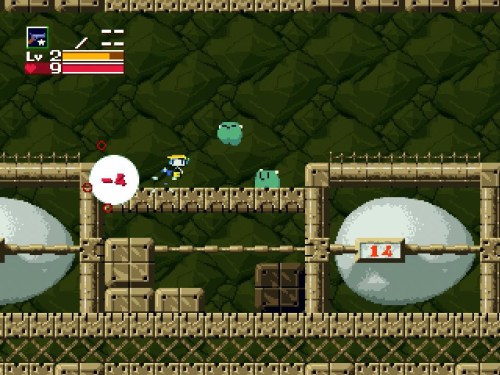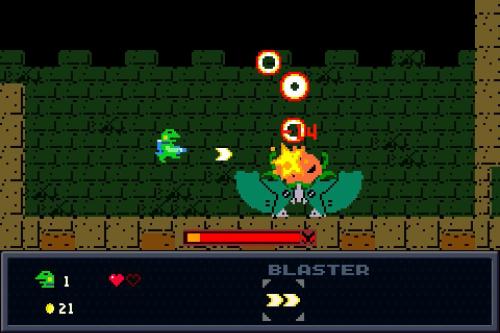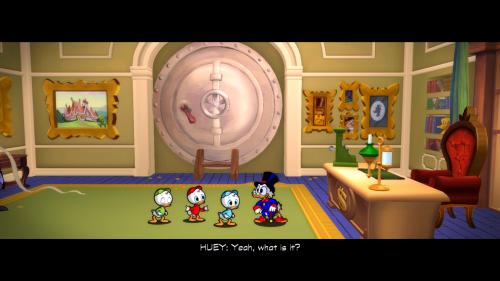Although I don’t own an actual Xbox One (XBO), I’ve been hearing great things about its controller since it launched nine months ago. My go-to controller for the PC has always been a wired Xbox 360 one, and aside from its terrible d-pad — and it is truly terrible, despite Microsoft trying to fix it a few times — is probably my all-time favorite controller. It has a great button layout, is comfortable to hold, and I’ve always preferred its asymmetrical and concave thumbsticks over the convex designs found on the PS3 and Wii.
It’s also one of the most durable controllers I’ve ever owned, and I’ve never had one fail… until now. Not bad considering I’ve been using this original white and gray one for what has to be close to a decade now, and it’s been put through the paces, most recently surviving Shovel Knight, Electronic Super Joy and all three of the Arkham games on PC, as well as being a reliable partner in getting me all the way through Super Meat Boy on the 360 back in 2012.

Last week, I started Volgarr the Viking with it, and while it was doing OK for a while, the left thumbstick started to get unresponsive, and that’s not good, especially for a game like Volgarr. Plus, it’s very well-worn, with the raised bumps on its rubber surface barely intact, an ever-increasingly loose dead zone, and an unattractive yellow-greenish discoloration that makes me question my own hygiene. I also didn’t like having to swap controllers for retro gaming due to its DOA-pad, as I so affectionately called it.
“Baby, we had a good run, but I’m afraid it’s time to say good-bye.”
It took me a while to finally pull the trigger on the XBO controller, though. While 360 controllers can be had for a street price of about $30-35, the Xbox One controller costs a whopping $55-60. Sony DualShock 4 controllers are similarly priced, with the Wii U Pro Controller being about $10 cheaper. Controllers are important, however, so if you’re not using a good one, the experience suffers as well.
With my 360 controller not pulling its weight anymore, I clicked the “Place your order” button on Amazon and eagerly awaited its arrival.

I was surprised when the big box arrived. I was half-expecting a padded mailer with the controller sealed in a blister pack, but I’m glad my $55 and change got me a nice box, complete with glossy finish over the controller images. I’m not being sarcastic here; I really do appreciate nice packaging, especially in this day and age where you’re lucky if you get anything resembling a manual at all with your $60 game.
But I digress.

Getting back to the packaging, the box itself is nice and sturdy, with the only included plastic of any significance being the retail shelf hanger (which is recyclable) and the wrapper around the two AA batteries.
Yes, I said batteries. I’m guessing Microsoft had a good reason to stick with them, but it kind of blows my mind that their brand-new console still uses AAs. Sony ditched them last generation, and even Nintendo switched to rechargeable packs in both their Wii U GamePad and Pro Controller.

Anyway, also included inside the box is, of course, the controller itself, a quick start guide, health/warranty information, and a 2-day Xbox Live Gold trial. I ditched Gold a long time ago, but Microsoft’s Games with Gold program makes it more enticing, especially for those used to the perks of PlayStation Plus.
I noticed that the hard internal cardboard that surrounds the XBO controller left light scuff marks on the back of its black housing. They’re minor, but I think Microsoft should include a protective wrap around it to prevent any damage if or when they revise the packaging.
Also, it’s important to note that if you plan on using this as a wired controller — which is how I’m reviewing it — you will need a Micro USB cable such as this one, since no cable is included. Thankfully, they’re dirt-cheap.

The controller itself is quite similar to its 360 older brother, with a near-identical face button layout. On the back? No screw holes! Very nice design. Sometimes those recesses can dig into your fingers during heated, extended gaming sessions, so their removal is a very welcome update.
The Back and Start buttons now have symbols on them that represent View and Menu, which is just bizarre to me. Thankfully — at least on the PC — they behave just like the 360 buttons. The large, circular Guide/Xbox button has been moved up and away from the Back/Start cluster, which I think is great.
What isn’t great is that it now emits a constant white glow whenever the controller is plugged in. My SteelSeries mouse emits a similar glow, but I can turn it off if I want. As of this writing, there doesn’t seem to be any way to turn it off or reduce its intensity, which is unfortunate.
Another slightly annoying bit of behavior is that when you turn your PC on or your plug the controller into a USB port, the controller will vibrate for about 3 seconds. The first time this happened, I had the controller sitting on top of my PC case, which is made out of metal. The loud noise that resulted made me think one of my hard drives had died!
Hopefully both of these issues will be addressed in a future driver update, but to be honest, they’re very minor. The drivers themselves are still very new for the PC, having only been released about two months ago. You can download them HERE. Installation couldn’t be simpler, and you’ll be up and running within a couple of minutes.

Grips feel meatier and more comfortable than they did on the 360 controller, and the triggers and bumpers have been redesigned as well.
The analog triggers are silky-smooth and are more or less silent when you press them. They have individual vibration motors in them, which I haven’t experienced firsthand yet. Microsoft calls them Impulse Triggers, but I believe this first PC driver simply emulates 360 controller support, so time will tell if this gets added in and PC game developers support them.
The bumpers are a little bigger on the XBO controller, but are otherwise similar to the 360 ones. My right bumper clicks significantly louder than the left one, though. Not sure if that is intended or not, but a cursory look around the internet shows that other users have observed this as well. In-game responsiveness is fine, however.

What’s particularly nice about the XBO controller are both the new d-pad and analog thumbsticks.
The d-pad is by far the biggest and best improvement on the controller, with a nice concave shape, and satisfyingly tactile clicks with each directional press. Moving your thumb across it is smooth, diagonals are effortless, and it’s wonderfully responsive. If you like the feel of the 3DS XL or Wii U Pro Controller d-pads, you’ll absolutely love this.
The thumbsticks have been similarly revised, with thick, smaller diameter tops covered in a grippy material. I love these. As you can see on my 360 controller, any grip that was there to begin with is now gone. These have excellent feel, don’t slip at all, and are better-suited for multiple styles of play.

The colored face buttons curve around the right side of the XBO controller more than they do on the 360’s. They are also slightly larger in diameter, sit more flush with the controller’s housing, and are less resistant, which yields great responsiveness. They are easier to read now too, with each colored letter set against a black background.
As with the 360 controller, there is an expansion port on the bottom for headsets and other future peripherals.

So yeah, that darn battery compartment. The good thing is that it’s been designed to sit flush with the back of the controller. 360 owners know how bulky and intrusive the battery pack compartment is on the wireless controller, so it’s nice to see Microsoft improve the design significantly, to the point where you won’t notice it.
I do like the “Hello from Seattle” there on the inside label, too. Nice touch.
But again, why traditional batteries? Yes, I get that if a built-in rechargeable battery fails, you’re basically left with a dead controller, but through multiple generations, I have yet to have that happen. The sold-separately Play & Charge Kit will run you an additional $20, so you’re looking at $75-80 for just one controller, which is borderline absurd.
A brilliant aspect of its design, however, is the fact that the XBO controller doubles as a traditional wired one if you use a Micro USB cable with it. You don’t need any batteries at all if you choose to go this route, and it works beautifully. For PC, I believe this is the only option available, so it makes that decision an easy one.
Most importantly, gaming with this controller is a dream. It got me through the second stage of Volgarr the Viking this week, and the video above shows me playing through the first stage of Irem’s R-Type III: The Third Lightning on the Super Nintendo. Whether it’s classic side-scrolling action or frantic shoot-’em-ups, it gets the job done.
I haven’t played through R-Type III since the ’90s, and it’s crazy how advanced it was at the time! Some of those Mode 7 effects are still so impressive today.

In any event, this is a great controller. It’s everything that made the 360 controller one of the all-time best, with improvements and refinements that make it even better. It’s not as radical a departure as, say, the Nintendo Wii controller was, but when your predecessor is so good, you don’t want to mess with it too much. You risk really screwing it up.
Although not without its faults and with room for improvement, this is a fantastic addition to anyone’s PC controller arsenal, providing seamless support for current and retro games alike. If you can play it with a 360 pad, you can play it with this. Highly recommended.
Overall: A-





 Final Fantasy X/X-2 Remaster (Vita, $20.00)
Final Fantasy X/X-2 Remaster (Vita, $20.00) Aban Hawkins & the 1001 Spikes (Wii U, $15.00, 20 hrs.)
Aban Hawkins & the 1001 Spikes (Wii U, $15.00, 20 hrs.)




































 As early as 1983, when our family was living in Spring, Texas, and Cheryl was still in kindergarten, I remember the Atari 2600 being central to our home life when the weather didn’t permit us to be outside riding our bikes, swimming, and hurting ourselves in every which way as kids do.
As early as 1983, when our family was living in Spring, Texas, and Cheryl was still in kindergarten, I remember the Atari 2600 being central to our home life when the weather didn’t permit us to be outside riding our bikes, swimming, and hurting ourselves in every which way as kids do.
 As the 8-bit console era came around and we got our Sega Master System, her favorite games on it were the Light Phaser gun games, such as Safari Hunt, Marksman Shooting, and Trap Shooting.
As the 8-bit console era came around and we got our Sega Master System, her favorite games on it were the Light Phaser gun games, such as Safari Hunt, Marksman Shooting, and Trap Shooting.



 However, we would always find time to get in a game or two here and there, and her favorite on the PlayStation was Namco’s Ridge Racer. While we were at the point in our lives where we weren’t all that competitive anymore, it was still a lot of fun to take turns and play.
However, we would always find time to get in a game or two here and there, and her favorite on the PlayStation was Namco’s Ridge Racer. While we were at the point in our lives where we weren’t all that competitive anymore, it was still a lot of fun to take turns and play.

















